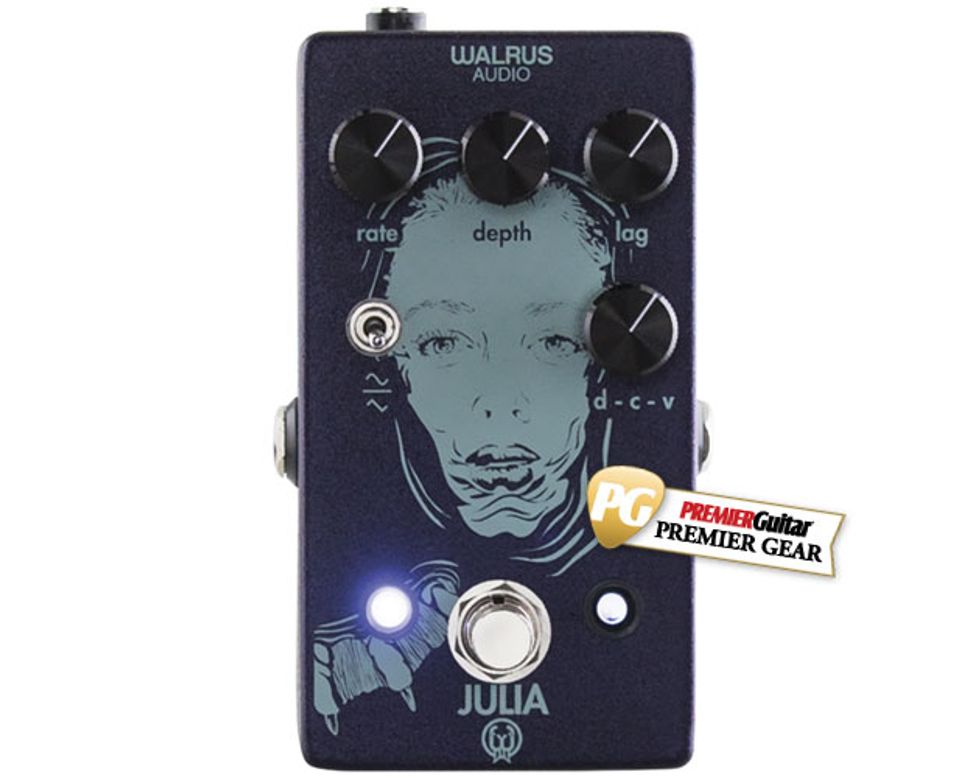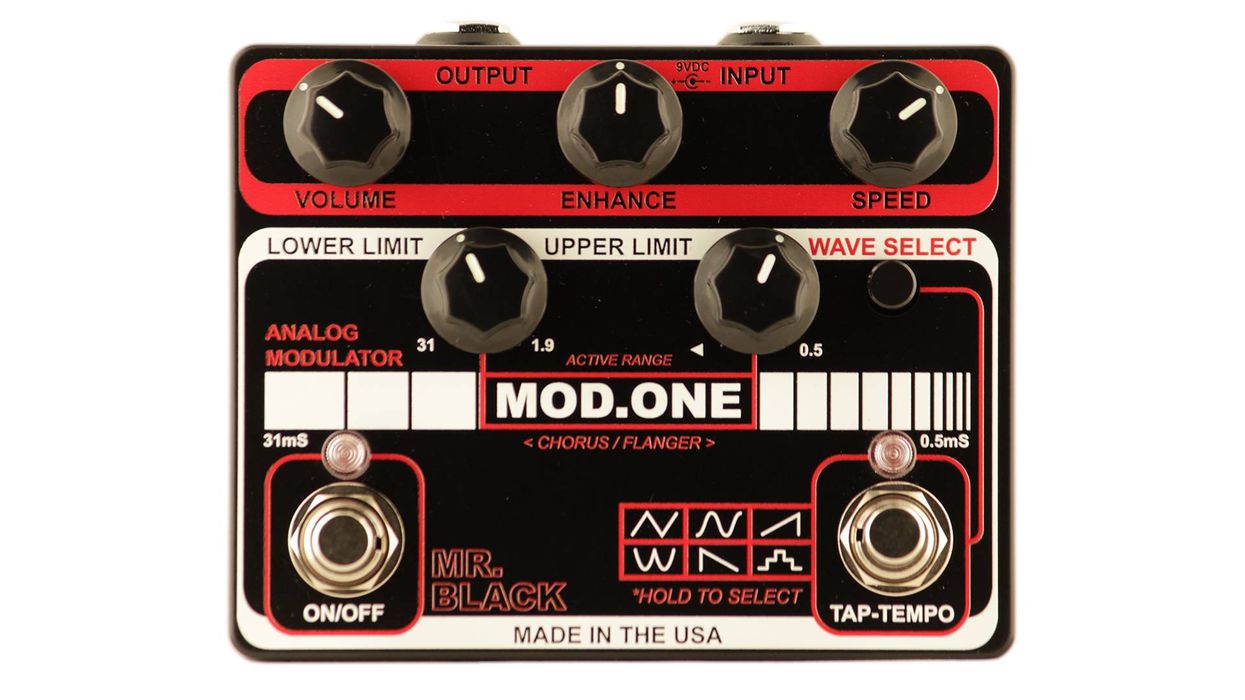Here’s a 6-string litmus test: “Do you like chorus?”
For many players, chorus is the cheesy, energy-sucking effect that neutered countless otherwise effective guitar tones. Meanwhile, young players who look back fondly at ’80s pop/rock (and old players who never outgrew it) welcome chorus’ softening/fattening qualities in all their retro charm.
Amazingly, Walrus Audio’s Julia chorus may seduce players of both persuasions. It offers classic chorus sounds, new variations, and, perhaps most important, the option of subtle settings that don’t scream “I want my MTV!” (That, young readers, was the station’s slogan soon after debuting in 1981.)
Classic Chorus
Let’s start with the nuts-and-bolts stuff. Julia resides in a standard 125B-sized enclosure. Its plastic jacks are affixed to a circuit board populated with modern, small-format components, save for the new-production Coolaudio bucket-brigade and clocking chips, which are through-hole. Julia runs on standard 9V power and has no battery compartment.
There are the expected rate and depth controls, and both have nice-feeling tapers and useful tones throughout their ranges. A lag control sets the center point of the modulated delay time, producing tighter, flange-like sounds at one extreme, and big, wide wobbles at the other. You can also toggle between the usual triangle-wave modulation and smoother, subtler sine-wave modulation.
Ratings
Pros:
True analog circuitry. Classic chorus sounds. Cool and potentially subtle variations. Nice build.
Cons:
None—unless the very notion of a chorus pedal makes you gnash your teeth.
Tones:
Ease of Use:
Build/Design:
Value:
Street:
$199
Walrus Audio Julia
walrusaudio.com
And then there’s that fourth knob …
Wet, Dry, and … Damp?
You probably know this already, but just in case you don’t: The chorus effect comes from pitch-modulating your signal (that is, making notes wobble up and down slightly), and then combining that sound with your dry signal. The pitch discrepancies between the detuned and dry paths produce the harmonically rich chorus effect.
That means you can mute the dry signal, leaving only the wobbling sound. Voilà—vibrato! That’s hardly a new idea. The very earliest chorus pedals—the Shin-Ei Vibra Chorus and Uni-Vibe from the 1960s—featured chorus/vibrato switches. But guitarists rarely embraced Uni-Vibe vibrato, and many modern spin-offs omit the feature. (And, to be honest, Uni-Vibe vibrato isn’t especially attractive to most players, with its seasick bends and clubfooted modulation.)Here, though, the vibrato is invitingly musical in both its sine- and triangle-wave versions.
Meanwhile, the wet/dry mix is continuously variable from 100 percent dry to all wet. It’s the mix control (labeled d-c-v for “direct-chorus-vibrato”) that makes Julia sing in so many varied voices, including subtle ones.
Low mix settings provide understated yet animating chorus colors. With the knob in the middle third of its range, you get classic chorus sounds. In the upper part of its range, the knob favors the vibrato signal. And man, there are so many cool and useful tones in those nooks and crannies that most chorus pedals omit. I suspect that many players who don’t like conventional chorusing just might dig Julia’s tasteful in-between settings, like dry tones with just a hint of chorusing, or some of the vibrato/chorus hybrids.
The Verdict
I knew within seconds of plugging in that Julia would become one of my favorite chorus pedals. If you like the classic analog effect, you’ll be happy here. If you don’t, Julia’s uncommonly subtle settings might make you at least a partial convert. The build is excellent and the price is fair. Julia is one worthy wobble box!









![Rig Rundown: Russian Circles’ Mike Sullivan [2025]](https://www.premierguitar.com/media-library/youtube.jpg?id=62303631&width=1245&height=700&quality=70&coordinates=0%2C0%2C0%2C0)


























